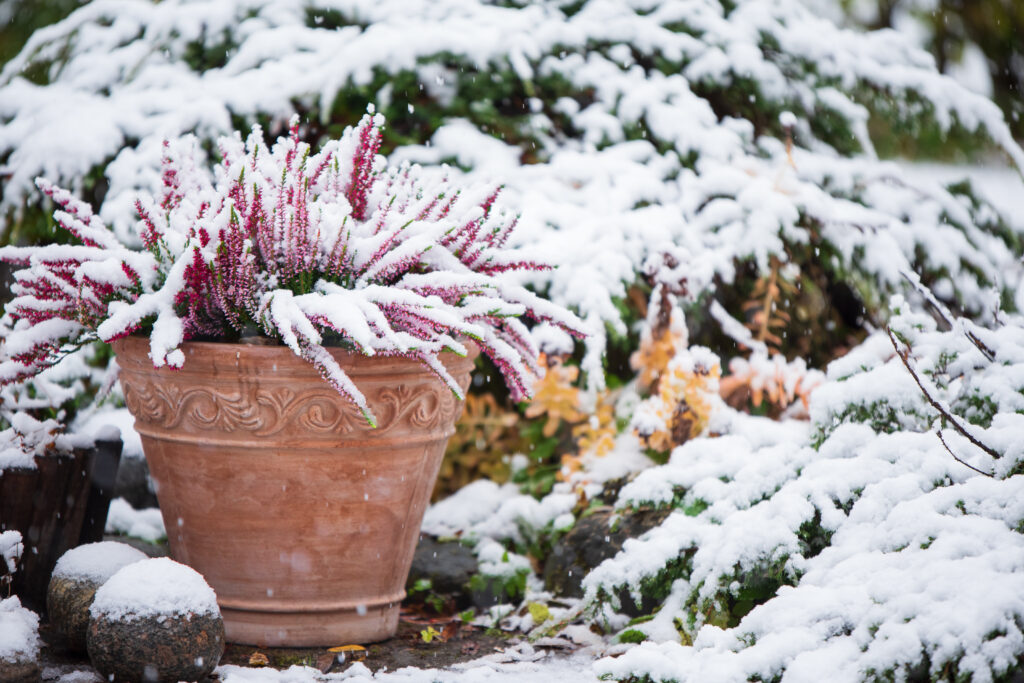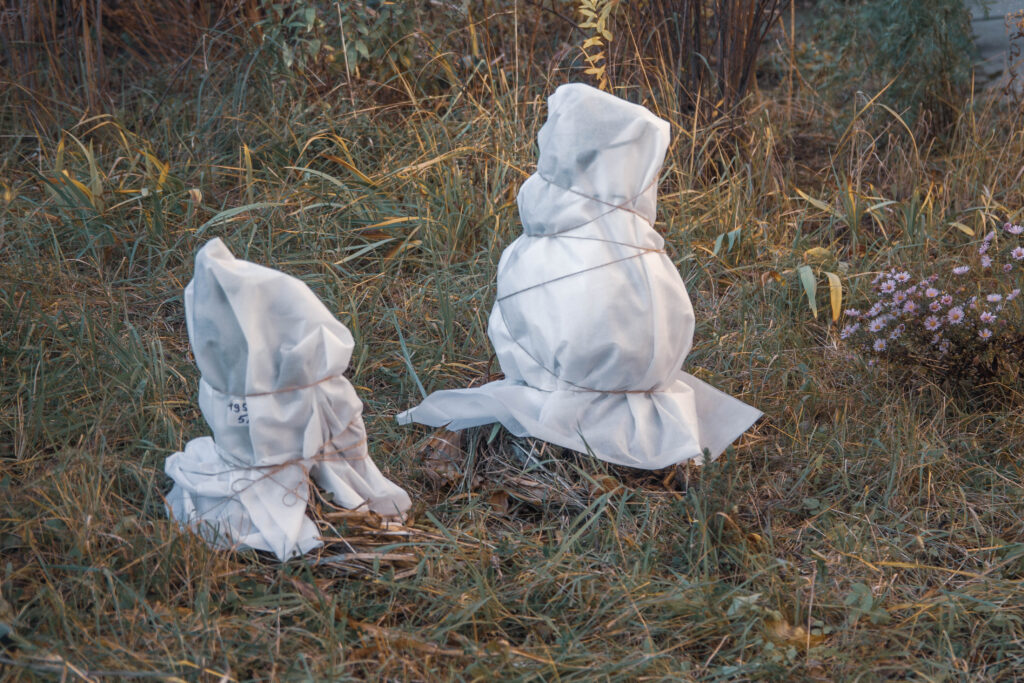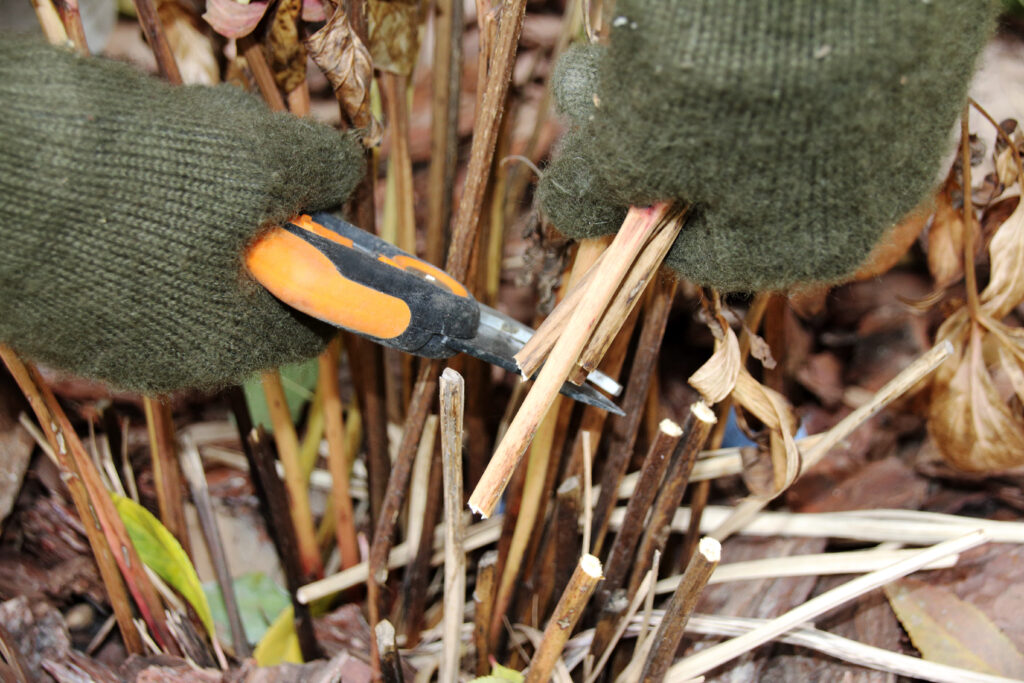8 Gardening Tasks for Winter
It may seem that you have to wait until spring to ‘dig’ into your garden work, but there are several things you CAN and SHOULD be doing while its cold out.
Winter is the perfect time to get started on your garden for Spring. Use the Off-season to winterize your garden and prepare for the warmer days that are coming up. This way, you will be ready to go as soon as the thermometer begins to rise!

Winterize your Garden
This one really should have been done before the first frost, however if you put it off, it’s not too late! Water the ground thoroughly before hand, and then start getting your plants ready for winter!
Add a generous layer of compost (no more than 3 inches thick) to the soil surrounding your plants. The compost will continue to supply organic nutrients to the soil (IE: your plants) and keep your plants strong and healthy for spring!
Mulching around the base of the more tender plants, newly planted trees etc will help keep root temperatures stable throughout the winter months. You can use shredded leaves, ground bark, standard mulch or even evergreen branches/trimmings. The Mulch blanket should be several inches thick. For Newer trees or shrubs, wrap with a layer of burlap stuffed with insulating material such as straw or dried leaves.
Mulching your garden is also a great way to discourage weed growth, as the weeds are unable to get the water and sun they need to thrive and grow, thus saving you even more time come spring!
Be sure you regularly check the bases of your small perennials and shrubs during freeze-thaw cycles. They can sometimes get ‘pushed’ up out of the dirt. If this happens, just tuck them back in and water them.

Water your plants.
Yes, we’re serious. Most people assume plants are dormant in the winter and don’t need to be watered. Forgetting to water your plants during winter can result in the need to replace plants come spring. To prevent the weakening effects of drought, continue to water trees and shrubs as usual up until the ground freezes.
Did you know that watering before it freezes actually helps your plants? This is especially true for your potted plants and annuals. This allows your plants to take in moisture BEFORE the ground is frozen. Once the ground freezes, water is unable to penetrate to the roots through the frozen ground. Be sure to hydrate above-ground shoots as well as the roots. While the weather is freezing you can take a break from watering your garden plants.
Since plants lose moisture through their needles, leaves and trunks throughout the winter, look for short periods of winter thaw as an ideal time to replenish lost moisture by watering deeply.
Continue to Grow Food!
Winter doesn’t necessarily mean the garden is done for until spring… Greens like lettuce, mustard and kale can all be grown in a cloche or cold frame. Many root crops and brassicas will overwinter for a spring harvest. For best results, check with your local nursery or extension service for winter vegetable gardening tips in your region.
If you’re fortunate enough to live in a climate that’s ideal for winter gardening, you will need to take some tips from above to keep your plants protected in winter. Winter gardening usually involves cold, hardy plants, such as winter greens, pansies and holly.
Take stock
Take time to evaluate your yard from the cozy comfort of your house. What are some things you would like to change for next year? What are your #yardgoals ? Do you want to install that new fire pit, garden bed or gazebo? Do some research and make some plans! Figure out how much lumber you will need, and what it will cost. Hop on Pinterest to see the latest trends and DIY hacks! What do you have and what do you need? How are you setting on pots, potting soil and have you ordered your seeds yet for next year?
The colder months are also an ideal time to clear out any pest breeding grounds. Areas that hold standing water, piles of leaves/wood and any rubbish piles that have been forgotten about. Eliminating the breeding grounds now will give you more time to enjoy your yard later.
Tend to your Tools
Get out in the shed and take stock of your tools while you’re at it! Winter is the perfect time to tend to your tools. Winterize your garden hoses by disconnecting and draining them, Remove nozzles and sprinklers and store in a dry place.
Some other ideas to Tend to your Tools:
-
Sharpen, lubricate and repair as needed
-
Check your lawn mower for rust (or other potential problems)
-
Take inventory. Check your fertilizer, potting soil, mulch, plant food etc…and be sure to order and have on hand to use throughout the growing season
-
Read all those gardening magazines and seed catalogues you have piling up and order early!
Winter Weed Control
When you get that unseasonably warm winter day, grab your jacket and rake and get out there and tackle some of those weeds! Getting rid of them now will save you and your back from having to pull HUNDREDS of weeds in the spring.
Early Winter is the best time to do this, before the seeds have been spread by wind, snow and pets. When you’re digging up weeds, be sure to get as much as the plant as possible, without spreading further into your garden.
If you invested in WeedEnder when you put your garden in, this task is pretty much non existent. All you will need to do come spring is clear any debris that fell in the area. WeedEnder provides ground cover during the winter months that prevents weeds from appearing, just as it does throughout the warmer months. An added benefit – it also serves as an insulator and helps keep water IN for your garden plants!
Build a compost bin
Head to your friendly neighborhood Garden Center and grab an old barrell, or some used pallets to build a compost bin! Use the pallets to build a 3-sided bin. Using sip ties, fasten together, giving each bin a back and two sides. If using an old barrel or Garbage Can, screw holes down the side to allow air flow etc. Attach the lid with zip ties or bungee cords. Locate your new composting system in a mostly sunny site, and then add your garden and appropriate table scraps throughout the winter. Be sure to use a shovel to turn every few days*
Prep for a new garden
If you are planning a new garden bed for summer, now is the time to start that project! Start by placing a thick layer of newspaper or cardboard over the area, then pile on alternating layers of organic material like compost, leaves, pine needles, untreated grass clippings, and straw. In the spring, the grass and weeds underneath the pile will be dead, and your new garden bed will be ready to plant!
OR you could skip all that hassle, and just install WeedEnder into your gardens and landscaping beds… if you haven’t already.




